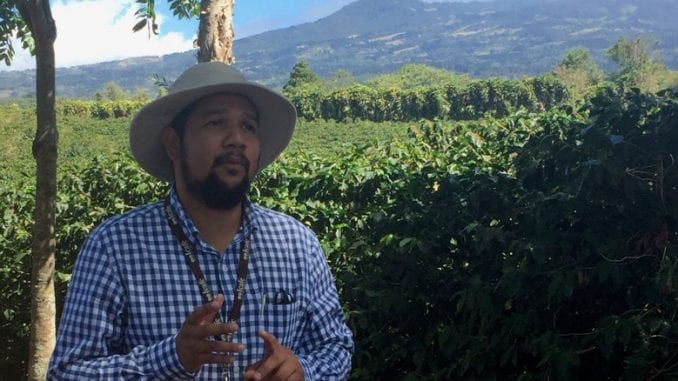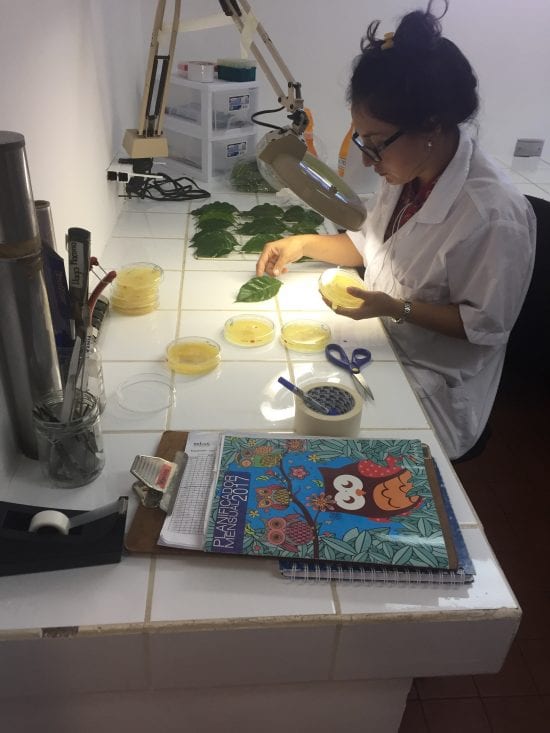
Icafe is a Costa Rican coffee institution that runs experimental coffee crops, studies coffee mutations, and builds a database about soil conditions ideal for growing.
BY ERIN MEISTER
SPECIAL TO BARISTA MAGAZINE
“How did you start studying coffee?” I asked Noel Arrieta Espinoza, coordinator of the genetic improvement program for Icafe, Costa Rica’s national coffee institution. He explained that he started with Icafe as a university student eight years ago and has been there ever since, working on the creation and maintenance of new varieties, as well as overseeing the eight-hectare experimental farm. “Maybe it’s my destiny,” he says with a shy smile and shrug.
Coffee is certainly part of Costa Rica’s destiny: Despite the fact that the country’s agricultural industry has dropped precipitously over the past 50 to 100 years, and coffee accounts for only about 3 percent of the export economy, in some regions, such as the famous coffee town of Huehuetenango and its outskirts, coffee fuels an estimated 80 percent of the local economy. Without coffee, Costa Rica would still be a wonderful, diverse, vibrant, beautiful, and probably even still relatively economically stable country—but it just wouldn’t be the same.
The national government has acknowledged and honored the importance of coffee to this country of about 4.6 million, and has recognized that as a part of the culture as well as the economy, it needs to be preserved. To that end, it founded Icafe—Instituto del Café de Costa Rica—in 1933 with the mission to understand, preserve, and promote the coffee sector, and to act on behalf of Costa Rica’s smallholder coffee farmers (who make up 70 percent of the country’s coffee-farming population and each hold fewer than 10 hectares), for whom scientific research, experimentation, and data collection would be otherwise inaccessible.

Visiting Icafe, one sees the many elements working together on behalf of Costa Rica’s coffee-producing populace. There’s Noel’s department, which strives to breed and study plants that speak to the sustained future of coffee farming (e.g., fighting leaf rust, coaxing higher yields, differentiating with flavor). There’s the phytopathology lab that studies the many strains and mutations of diseases and seeking natural preventative and antidotal treatments for them. And then there’s the chemical lab, which takes soil and water samples to offer advice and regulate pollution.
The institute—which is ideologically apolitical though it’s funded through a government-issued export tax of 1.5 percent per every pound of coffee leaving the country—handles regulations and licensing of mills, exporters, roasters, and traders, and keeps close record of every sale contract for every coffee transaction each year, in an effort to ensure that 78.1 percent of the FOB (free on board) price goes directly to the grower rather than being chipped away at by intermediaries.
Specialty-coffee people are perhaps a bit inclined to balk at “The Establishment,” and are sometimes guilty of pooh-poohing or taking for granted the work that national coffee associations like Icafe in Costa Rica, the FNC in Colombia, IHCAFE in Honduras, or Anacafé in Guatemala do—especially when it comes to developing leaf-rust-resistant varieties, to which we give a skeptical sideways glance and complain about the flavor. What we have to remember, however—and sometimes need to be reminded of in a drastic way, as the rust crisis of the past half-decade has done—is that for millions of farmers around the world, a 90+ coffee is a beautiful dream, but an 80-point coffee might actually fill the cupboard. And if there’s no crop at all, then the family goes hungry. Icafe strives to protect and advocate for small farmers for whom that crop is the sole moneymaker, and the breadth and depth of its work is astounding.
For Costa Rican coffee farmers, Icafe might be something of a helicopter parent: Ever-present to something of an irritating degree at times, but at its heart well-intentioned and simply trying to look out for the greater good. Hopefully as specialty coffee grows out of its sometimes-petulant teenage years, we’ll be able to recognize and give proper due to the national organizations and individuals who conduct the research, compile the data, push the paperwork, and ultimately serve as the back-door heroes at origin. After all, who needs a white knight when you’ve got a white lab coat?
 ABOUT THE AUTHOR
ABOUT THE AUTHOR
Erin Meister (you can call her just Meister) has always led a kind of weird, caffeinated double life. As a coffee professional, she’s been a barista, retail manager, wholesale-support representative, and educator; as a journalist she’s written and/or edited work for The Boston Globe, The Washington Post, Serious Eats, Saveur.com, and Every Day with Rachael Ray magazine, as well as the gem you’re reading right now. These days she can be found selling green coffee for Café Imports, riding her bike around the beautiful Twin Cities, and finally (finally!) taking a break from blogging. You can email her at meister@justmeister.com.

